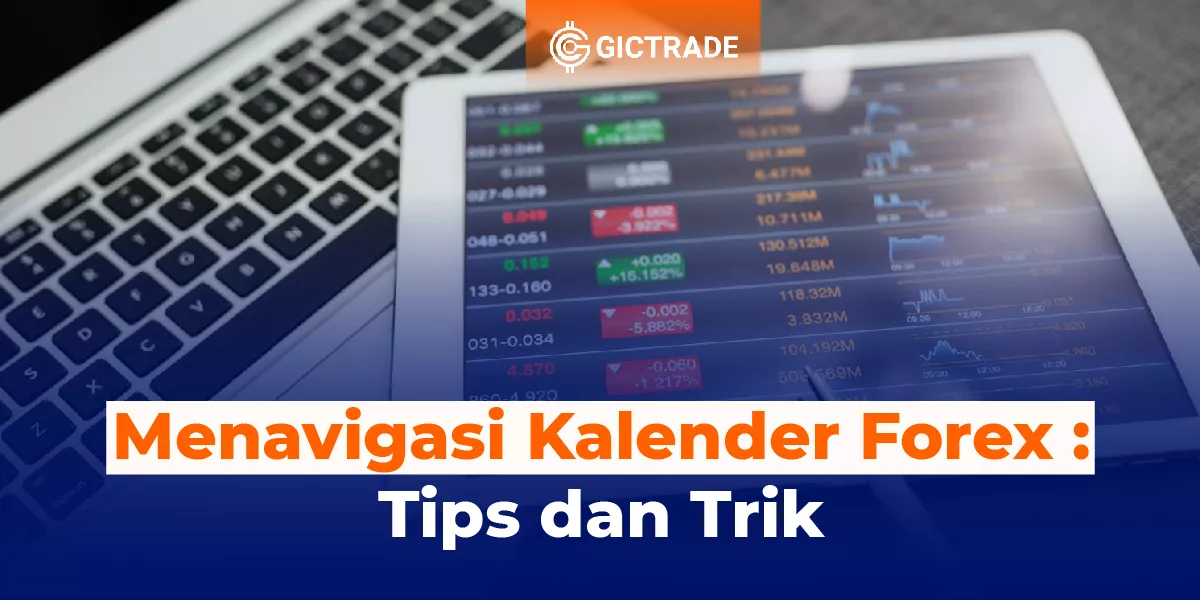Hedging is an advanced risk management strategy that involves buying or selling an investment to help reduce the risk of losing an existing position. To find out more about this hedging, you can read the following article. In addition, don't forget to follow the GIC Instagram account for information and other trivia!
What is Hedging?
Hedging is an advanced risk management strategy that involves buying or selling an investment to help reduce the risk of losing an existing position. Hedging is not a commonly used trading strategy among individual investors, and in cases where it is used, it is usually applied at some point after the initial investment has been made. This means that you will not hedge your position at the beginning of the purchase or short short the stock. Let's look at a hypothetical hedging example. Suppose you bought 100 shares of XYZ stock at $30 per share in January. A few months later, the stock was trading at $25. Assume that you don't want to sell the stock (probably because you still think it might increase over time and you don't want to incur a taxable event), but you want to reduce the risk of further losses. To hedge this position, you can consider a protective put strategy—buying a put option on a stock-for-share basis on the same stock. Puts provide the right, but not the obligation, to sell shares at a certain price, within a certain period of time. Suppose you buy enough put options to protect your current position at a strike price of $20. In this scenario, you will be protected from additional losses under $20 (as long as you have a put option).
Purpose of Hedging
In the simplest terms, hedging is taking equal and opposite positions in two positively correlated markets. The result of taking such a position is to set a definite price in one of the markets, as any losses incurred there will mean that profits are made in the relevant market, or any profits incurred in the primary market will be offset by losses in the market. correlated markets. The key factor that determines whether the price set by the hedge when he places the hedge (i.e. the expected price) is realized is whether the difference between the prices in the two markets (i.e. the base) behaves as expected. The reason hedging works is that, for highly correlated markets, the base variation is smaller than the price variation. It does not matter to the hedge how much the price changes, as long as the relationship between the price of interest and the correlated market remains less varied and reasonably predictable.
How Hedging Works
Hedging can take many forms, but one of the most common ways to hedge is by using derivatives, which derive their value from an underlying asset such as stocks, commodities, or indices such as the S&P 500. By using derivatives related to the underlying asset you want to hedge, you can directly limit your risk of loss. Here's how it works. Let's say you've bought a stock for $100 per share, but are worried that the upcoming earnings announcement could disappoint investors and make the stock fall. One way to limit your exposure to that potential loss is to buy put options on stocks at a strike price that you feel comfortable with. A put option with a strike price of $95 will allow you to sell the stock at $95 even if the stock falls well below that level. Here's what can happen if a stock goes up or down:
- If the stock drops to $80 per share, you will be able to use your option to sell at $95. Hedging fully protects your stock investment in the fall from $95 to $80, so your losses are limited to $5 per share ($100 – $95) plus options fees.
- If the stock increases to $110 per share, you will realize a $10 profit from the increase in the stock price, while the option will expire without value. Your net profit is $10 per share minus the option fee.
Large companies often use derivatives to hedge their exposure to input costs as a way of managing their risk. Airlines typically hedge the cost of jet fuel so they are not exposed to day-to-day spot market changes, while food companies can hedge for key ingredients such as corn or sugar. Of course, there are simpler ways to hedge as well. Some investors hold a portion of their portfolios in cash to protect against market declines, while others diversify by asset class or geographic region.
Hedging Risks
- Limit profits – While limiting your losses is one of the main benefits of hedging, it also means limiting your potential profits. If the investment ends up in appreciation and hedging is not necessary, you will lose the hedging fee. Similarly, if a farmer agrees to sell corn at a certain price in the future, but the spot market is at a higher price when the corn is shipped, the farmer will lose that higher profit.
- Fees – hedging comes with a fee, either the direct cost of the derivative contract used for hedging or the lower cost of profit in exchange for some protection. Be sure to understand all the costs associated with hedging before proceeding with one.
- Wrong analysis – It's possible that the investment you thought was a good hedge turned out to be not very good. Imagine owning airline stocks, but worried that higher fuel costs could impact the company's profits. You might buy a basket of energy companies as hedging, thinking that their higher profits will offset the negative impact felt by the aviation industry. But a broad economic downturn can send oil prices and travel demand plummeting, hurting both industries and leaving your hedging far from perfect.
[caption id="attachment_19618" align="aligncenter" width="1024"]

Sekilas Tentang Hedging[/caption]
Types of Hedging
Depending on this area, it has three types:
Forward
A Forward (or Forward Contract) is a non-standard contract for buying or selling an underlying asset between two independent parties at an agreed price and a specific date. It includes a wide range of contracts such as forwarding exchange contracts for currencies, commodities, etc.
Futures
Futures (or Futures Contracts) are standard contracts for buying or selling an underlying asset between two independent parties at an agreed price, standard quantity, and a specific date. It includes a wide range of contracts such as currency futures contracts, etc.
Money Market
It is one of the main components of the financial market; Currently, where short-term borrowing, borrowing, buying, and selling are carried out with a period of one year or less. The money market includes a variety of contracts such as money market operations for currencies, money market operations for interest, closed calls on equities, etc.
Hedging Examples
Here are some examples of hedging. Examples are:
Hedging on Futures
Let's assume that you buy 300 shares of SBIN at Rs. 420. This is a total investment of Rs. 1,26,000. Now you are not sure about the future of SBIN stock. So you decide to hedge this exposure using the futures market. The lot size is 300 and the futures price is Rs. 421. Since you are buying stocks, you decide to shorten the futures market by selling 1 lot of futures. This will be an amount worth Rs. 1.26.300. Now an extra 300 would be an extra because one would never be able to achieve a perfect hedging. And if the price moves, hedging will act like a hedge for the actual position of the stock.
Commodity Futures
Companies in the aviation industry depend on fuel prices. When oil prices rise, one of the input costs for airlines rises. It reduces the stock price. So an investor who holds airline shares can protect his exposure by buying oil futures. When oil prices rise, airline stocks fall but at the same time oil futures will appreciate. This is how oil hedging works perfectly for airline stocks.
Diversification
Diversification is the most well-known form of non-systematic risk hedging. If we buy a certain number of stocks for our portfolio, then the risk of idiosyncratics is reduced. Let's say we hold technology and banking stocks in our portfolio, then if tech stocks go down then banking stocks can act as hedging.
Index Futures
Let's first learn about the two types of risk – systematic and non-systematic risk. When we diversify a stock portfolio, we reduce idiosyncratic risk i.e. non-systematic risk. To reduce macro/market risk i.e. systematic risk, we need to use future indices that replicate market movements. Now to calculate the overall portfolio beta, we need to calculate the weights associated with the beta of each stock. For example, SBIN Weight = Rp. 2,50,000/Rp. 8,50,000 = 0.294 INFY Weight = Rs. 3,000,000/Rp. 8,50,000 = 0.352 RELIANCE Weight = Rs. 3,000,000/Rp. 8,50,000 = 0.352 Overall beta portfolio = (0.294*1.07) + (0.352*0.58) + (0.352*1.01) = 0.87426 Now, we need to calculate the hedging value which is the product of the entire beta portfolio and the total investment. Hedging value = 0.87426* Rs. 8.50,000 = Rs. 7.43,121. Let's use Nifty futures to protect a stock portfolio. Nifty futures are currently trading at 15,727 and the lot size is 50. So the contract value per lot is Rs. 7.86.350. Therefore the number of lots required for Nifty short futures is Rs. 7.43.121/ Rs. 7.86.350 = 0.945. As already explained, we can never have perfect hedging. In this case, if we short 1 lot of Nifty futures contracts, then we will be over-hedged and if we are not short, then we will be under-hedged.
Covered Call Options
A Covered Call is when you buy a stock and write a call option on the same stock at the same time. If you have bought X shares with the intention of long-term price appreciation, then the stock can have a flat trading period in which the stock moves within a specified price range. In this case, you can sell options on the stock to earn income when the stock moves within the price range. After knowing about hedging is an advanced risk management strategy, along with how it works, risks, types, and various examples, you can try this hedging yourself using the stock you have. In addition, if you want to trade with a small capital, then you can start trading at GIC by
registering through the official GIC website to be able to trade starting from IDR 150,000!

 Sekilas Tentang Hedging[/caption]
Sekilas Tentang Hedging[/caption]

 Last:
Last: 







